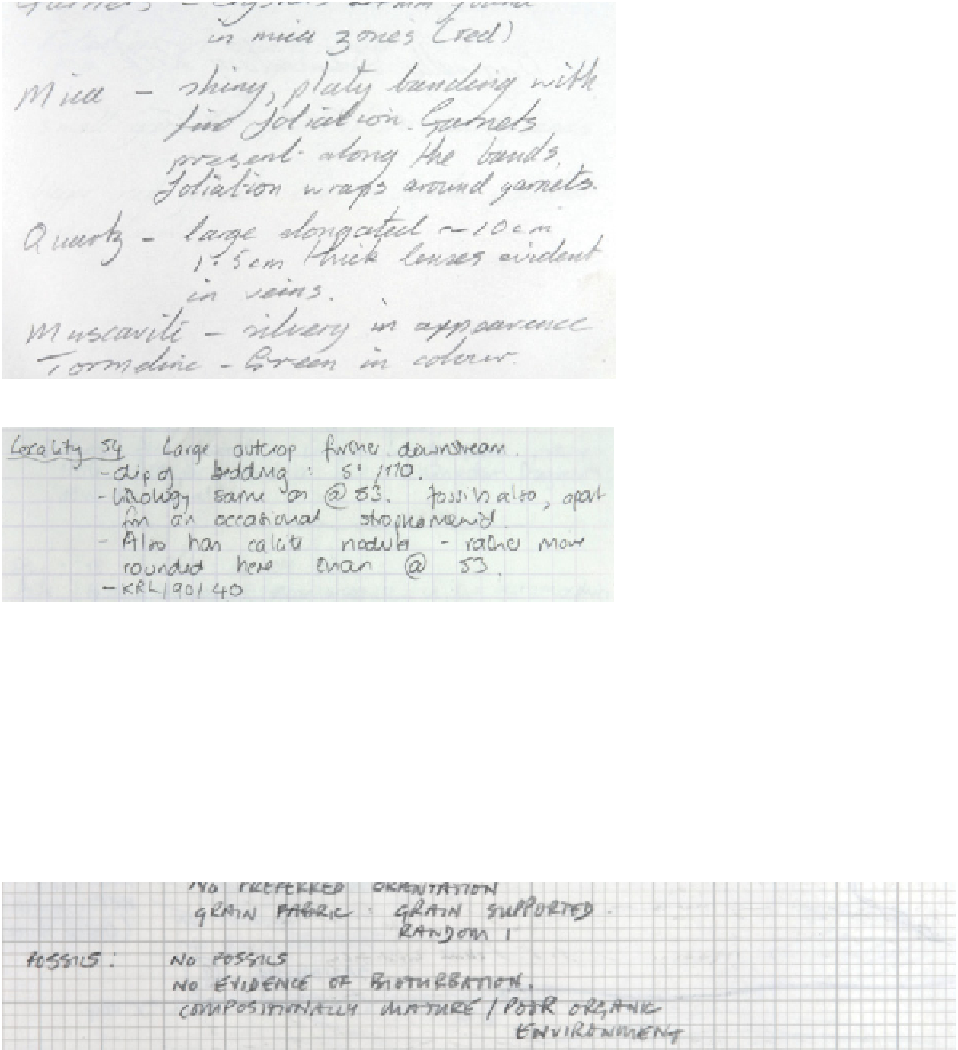Geoscience Reference
In-Depth Information
4
(a)
(b)
(c)
(d)
Figure 4.11
Extracts from fi eld notebooks showing examples of written data styles. In all cases the data are
clearly laid out and easy to fi nd. (a) List of the main minerals in an igneous rock and the characteristics of each
of the minerals. (Notebook of Paul Temple, Open University student.) (b) Main observations at one locality in an
area that was being mapped. (Notebook of Kate Bradshaw, The Open University, UK.) (c) Ordered and
systematically recorded structural data of both planes and linear features with the dip recorded as a two-digit
number and the strike as a three-digit number.
Note:
S
s
= main foliation, L
s
= main stretching lineation, L
f
= fault
lineation; the other abbreviations refer to minerals. See Section 8.1.1 for structural notation. (Notebook of Tom W.
Argles, The Open University, UK.) (d) Description of a sedimentary rock based on a checklist of compositional and
textural characteristics (see Appendix A6, Table A6.1). (Notebook of Brian McDonald, Open University student.)










